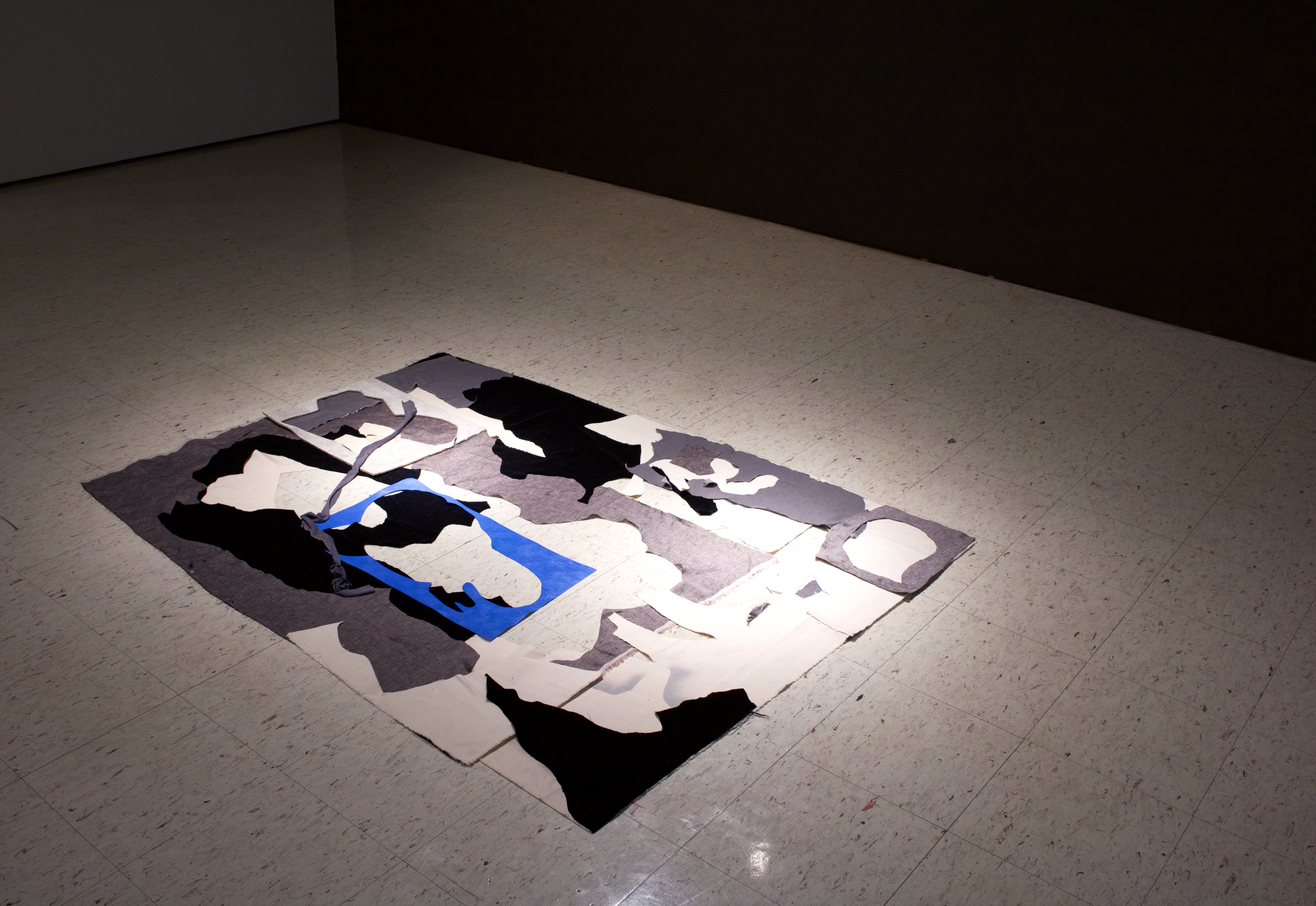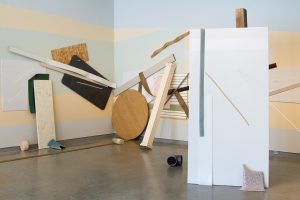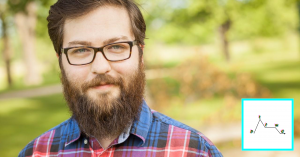This review is part of our Sixty Regional project which partners with artists, writers, and artist-run spaces to highlight art happening throughout the Midwest and Illinois.
Beyond the obvious irony of walking into a room titled A Place That Doesn’t Exist, what’s inside possesses a relentless sincerity. Marisa Boyd’s highly abstract work has a presence that is quiet but insistent.
Three framed drawings on paper, hung opposite the entryway, orient the exhibition at Transpace Gallery by capturing Boyd’s process in its most direct form. The scribblings and contours are done with a quick and intentional hand, as though drawn from observation. Appropriately titled Closed Eyes #1 and Closed Eyes #2, the drawings are created blindly, with Boyd referencing only the landscapes she sees behind her eyelids. The central drawing is overlaid with sheets of paper, which have been cut through with amorphous shapes. These cloud-like forms float throughout the space, cut from paper, gatorboard, plywood, canvas, carpet, and fabric.

Yet to Say Something Important finds two of these forms mounted adjacent and elevated slightly from the wall, giving the appearance of weightlessness. A layer of stucco is impressed with a crater-like texture and spray painted in atmospheric violet and green hues. The dimpled surface does not conform to the edges of its material, as though the shapes were lifted from a static void. The contours, with their curves and corners, are specific enough to be referential, but their source is elusive, allowing figural and spatial qualities to coexist, if only in part. In Chamber, one shape is mounted low on the wall, while another rests on the floor beneath it—the shadow of its counterpart. With an atmosphere of stucco, lint, and sand in place of features, the forms possess the intimacy and obscurity of a silhouette.
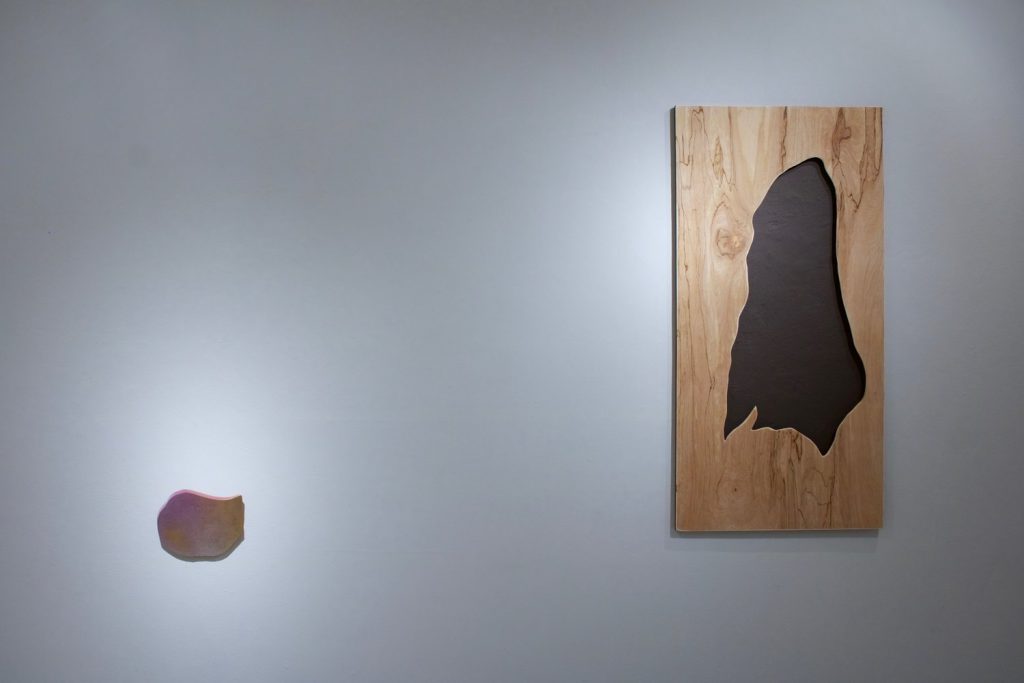
Way In reverses the relationship between shape and surface, as a hollowed slab of plywood reveals the painted black wall behind—making presence of absence. On the floor of the gallery is a collection of fabric from which shapes have been cut. Looking around, some of the positives can be found hung on the walls. The whole is present, but it cannot be observed all at once. Boyd reminds that at any given moment, our attention affords us one type of knowledge at the expense of another. As we focus on a detail, totality blurs and falls away. The more deeply felt an experience, the less capable we are of adequately expressing it.
After staring into the light of a projector that illuminates a collection of paper scraps, I turn to face Befall. With the afterimage of the projector bulb still burned in my retinas, the closely set lines of the carpet begin to waver and pulsate beneath drifting spots of color in my vision. In describing the sensation to others in the room, there is an acknowledgement of similar experience, but even in standing beside them, I feel a certain singularity.
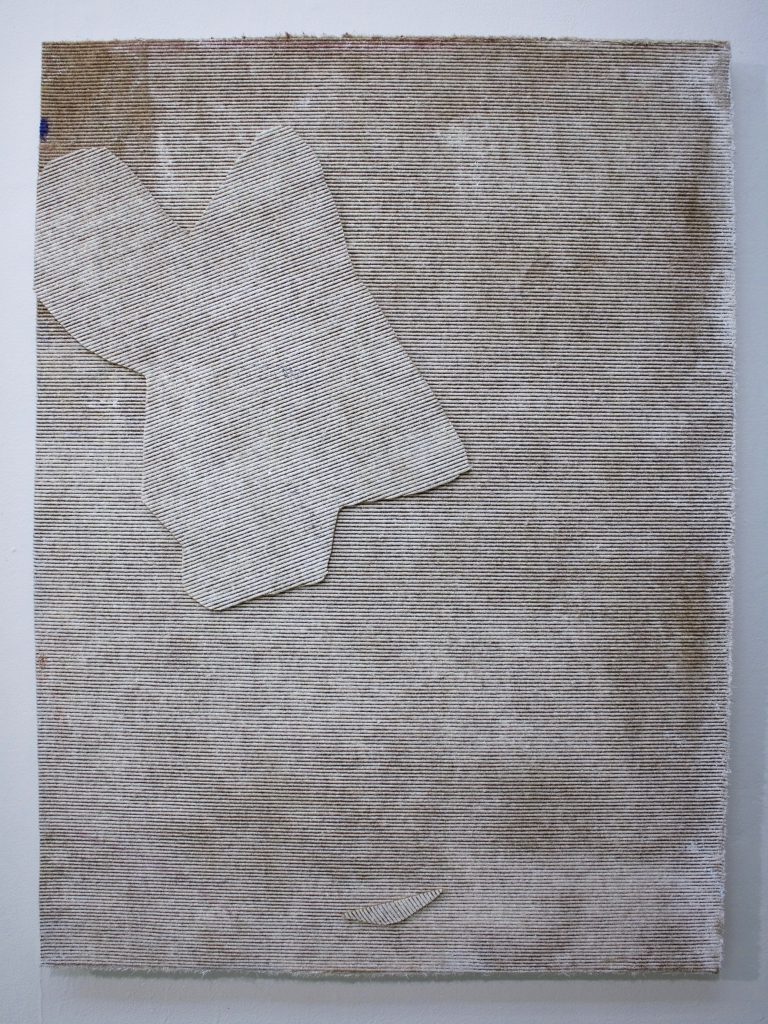
Boyd attempts to describe these visual sensations (often found on the inside of an eyelid) for the waking eye—her own it would seem, as much as ours. The result is never more striking than in The One That Has Yet to Surface, which animates dark velvet with immersive texture, insisting that the intimate vision of her closed eye is as expansive as it is substantial. The desire to externalize the internal is something like sharing with a friend the contents of dream, knowing even before speaking that the words will fail the experience. This then is the irony, that A Place That Doesn’t Exist in fact exists in multitude, but in each there is only room for one.
Featured Image: Marisa Boyd, “Odds and Ends,” canvas, velvet, linen, and stone paper on hardboard, 2017, image courtesy of the artist.
 Maggie Morton is an artist, writer, and poet, who earned her BFA in Painting from Illinois State University in 2016. Morton currently lives and works in Normal, IL, where she is the Director and Editor of Sight Specific, an online platform that documents and supports contemporary art programming in the Central Illinois area.
Maggie Morton is an artist, writer, and poet, who earned her BFA in Painting from Illinois State University in 2016. Morton currently lives and works in Normal, IL, where she is the Director and Editor of Sight Specific, an online platform that documents and supports contemporary art programming in the Central Illinois area.
